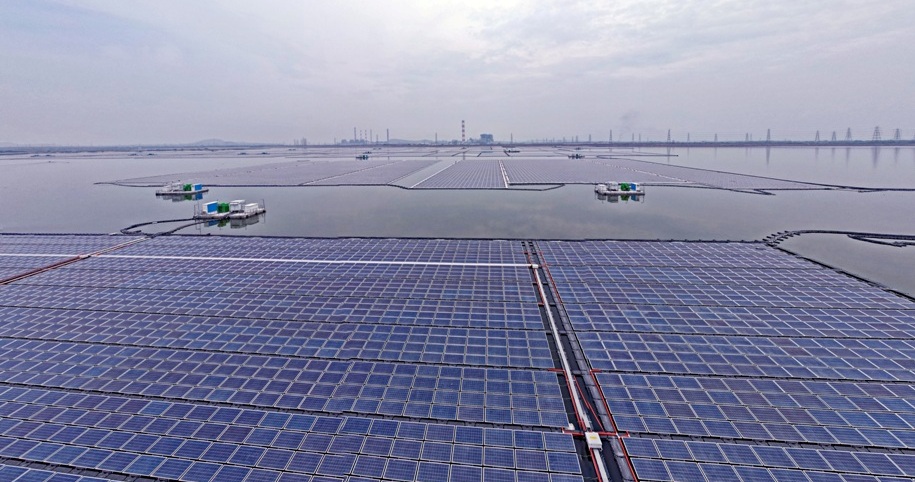NTPC, in a release, said that the final part of 20 mw capacity of the 100-mw Ramagundam floating solar project in Telangana was declared as commercially operational effective July 1, 2022.
With this, the 100-mw project located in the water reservoir of NTPC’s Ramagundam thermal power station, is fully operational and is now the largest floating solar power project in the country.
NTPC’s floating solar projects
NTPC now has 217 mw of generation capacity coming from floating solar PV projects in the southern region alone. So far three such projects have been built, all on water bodies associated with NTPC’s thermal power generation plants – Ramagundam (100 mw, Telangana); Kayamkulam (92 mw, Kerala) and Simhadri (25 mw, Andhra Pradesh).
Spread over 40 blocks
The 100-mw Ramagundam floating solar project is divided into 40 blocks, each with capacity of 2.5 mw. Each block consists of one floating platform and an array of 11,200 modules. The floating platform has one inverter, a transformer and a high-tension breaker. The solar modules have been placed on floaters made of high density polyethylene (HDPE) material, and the entire floating system has been anchored through special high modulus polyethylene (HMPE) rope to the dead weights placed in the balancing reservoir bed.
EPC contractor
Bharat Heavy Electricals Ltd (BHEL) was involved as the EPC contractor for this floating solar power project, spread over 500 acres of reservoir area, and built with an investment of around Rs.423 crore.
Power evacuation
Evacuation of power up to the existing switchyard is being done through 33kV underground cables. All the electrical equipment including inverter, transformer, HT panel and SCADA systems have also been mounted on floating ferro-cement platforms, anchored through dead-weight concrete blocks.
Checking evaporation
From an environmental point of view, the most obvious advantage is the minimum requirement of land, which is mostly for associated evacuation arrangements. Further, with the presence of floating solar panels, the evaporation rate from water bodies is reduced, thus helping in water conservation. The Ramagundam floating solar power plant can potentially avoid water evaporation to the tune of approximately 32.5 lakh cubic meters per year. The water body underneath the solar modules helps in maintaining their ambient temperature, thereby improving their efficiency and generation.

